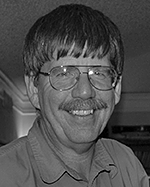
Calvin Barnes, PhD
Texas Tech University
Dr. Calvin G. Barnes holds an MS and PhD from the University of Oregon (1978, 1982) and a BS from the University of Nebraska-Lincoln (1975). He has taught at Texas Tech University since 1982, where he is Professor of Geology. Other work experiences include Texaco Corp., Anaconda, and the U.S. Geological Survey. Dr. Barnes’ primary research area is study of magmatic processes, with a focus on plutonic rocks. This research also involves study of crustal melting and relationships between high-temperature processes and tectonics. His geographic research areas include California, Oregon, northeastern Nevada, far west Texas and adjacent New Mexico, north-central Norway, and southern Finland. In recent years, many of Dr. Barnes’ research projects have utilized in situ analysis of trace element compositions of, and zoning patterns in, rock-forming minerals, to provide detailed information on petrologic processes that are obscured in bulk-rock analyses.
|
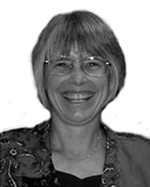
Melanie Barnes, PhD
Texas Tech University
Dr. Barnes is a Senior Research Associate in the Department of Geosciences at Texas Tech University in Lubbock, Texas, and Director of the GeoAnalytical Laboratory. Dr. Barnes’ research experience includes studies on the character of the buried Precambrian crystalline rock in eastern New Mexico and West Texas and the nature of the granite-rhyolite province throughout the mid-continent. Her GSCO2 research focuses on characterizing the surface of the Precambrian basement and the nature of weathered surfaces and deposits.
|
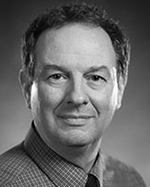
Robert Bauer, MS
University of Illinois, Urbana-Champaign
Robert Bauer is an Engineering Geologist at the Illinois State Geological Survey, a Division of the PrairieResearch Institute at the University of Illinois. He has 38 years of experience with coal mine subsidence, landslides,soil and bedrock behavior during earthquakes, and underground excavation. He is a Licensed Professional Geologist.
|
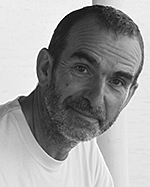
James Best, PhD
University of Illinois, Urbana-Champaign
Dr. Jim Best is the Jack and Richard Threet Chair in Sedimentary Geology, University of Illinois, where he holds appointments in the Departments of Geology, Geography and GIS, Civil and Environmental Engineering, and Mechanical Science and Engineering. Dr. Best’s research interests center around process sedimentology and geomorphology through the study of modern and ancient sedimentary environments and investigations of the coupling between fluid flow, sediment transport, and morphological development using laboratory, experimental, numerical, and field-based approaches. His work has ranged across scales, including study of turbulence modulation in fluid flows and the morphodynamics of bedform development; the dynamics and deposits of some of the World’s largest rivers (including the Jamuna, Parana, Mekong, Amazon, Mississippi, and Columbia Rivers) with an emphasis on multichannel braided rivers; study of sediment-laden density flows in the laboratory; contemporary glacial lakes and ancient deep-sea deposits; basin analysis of Carboniferous clastic sediments; and study of deltaic processes, form, and deposits. Dr. Best received his BSc from the University of Leeds, UK, and PhD from the University of London, UK, and has held previous positons at the universities of Hull and Leeds, UK, the latter as lecturer, Reader in Experimental Sedimentology and then personal chair in Process Sedimentology. Best has been awarded the Gordon Warwick prize from the British Geomorphological Research Group for outstanding contributions to geomorphological research and scholarship and has held fellowships awarded by the Royal Society of London, the Nuffield Foundation, and Leverhulme Trust. Dr. Best is currently a Faculty Fellow of the National Great Rivers Research and Education Center and holds a Diamond Jubilee International Visiting Research Fellowship from the University of Southampton, UK.
|
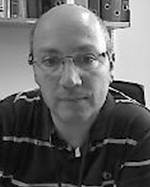
Pierre Cerasi, PhD
SINTEF
Dr. Cerasi has been employed with SINTEF since 2000. His experience in geomechanics, as a leader and scientist, includes projects related to sand production, borehole stability in shales, geomechanics applied to carbon capture and storage (CCS), and formation damage. His work includes laboratory experiments, numerical simulations, and theoretical models. Dr. Cerasi received his PhD in biomechanics from the Paris University Denis Diderot in 1996.
|
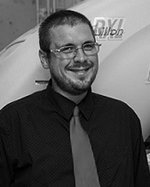
Dustin Crandall, PhD
National Energy Technology Laboratory
Dr. Dustin Crandall is a research engineer at the National Energy Technology Laboratory (NETL) in Morgantown, West Virginia. He graduated from Clarkson University with a PhD in mechanical engineering, working with researchers at NETL on his dissertation titled "Two Phase Flow in Porous Media and Fractures". Following graduation, Dr. Crandall was awarded a two year postdoctoral fellowship by the National Research Council evaluating multiphase transport in fractures. Since the post-doc his primary research activities have focused on simulation related to, and experimental analysis of, computed tomography derived flow in fractured geologic media.
|
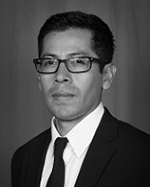
Nicolas Espinoza, PhD
University of Texas, Austin
Dr. Nicolas Espinoza is an assistant professor in the Department of Petroleum and Geosystems Engineering at the University of Texas-Austin. He is currently working in the Geomechanics Theme in the Center for the Frontier of Subsurface Energy Security (CFSES), an Energy Frontier Research Center (EFRC). Dr. Espinoza will collaborate with Drs. Charlie Werth and Ange-Therese Akono in the Geochemical Reactions Theme.
|

Bettina Goertz-Allmann, PhD
NORSAR
Bettina Goertz-Allmann is a senior research scientist in the microseismic monitoring group at NORSAR, Norway, since fall 2012. She earned her PhD in 2008 with a focus on earthquake source physics at Scripps Institution of Oceanography, University of California, San Diego. After earning her PhD, she spent several years at the Swiss Seismological Service at ETH Zurich, first as a postdoctoral researcher and later as a senior assistant. Her research interests are earthquake scaling relations, source parameter estimation, and earthquake rupture imaging. Her current research focuses on analysis of induced microseismicity in geothermal and CO2 storage environments.
|
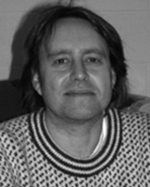
William Harbert, PhD
National Energy Technology Laboratory
Dr. William Harbert is a professor of geophysics at the Department of Geology and Environmental Science at the University of Pittsburgh and an ORISE scientist working at the US Department of Energy, National Energy Technology Laboratory (NETL). He earned his MS in exploration geophysics and PhD in geophysics from Stanford University. Dr. Harbert will contribute to petrophysical and geomechanical parameters, relationships, and models determined from core measurements at the NETL. He is a lifetime member of the Society of Exploration Geophysicists, a registered professional petroleum geophysicist, and member of the American Association of Petroleum Geologists and Society of Petroleum Engineers.
|
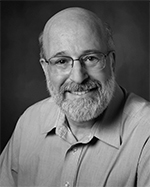
Stephen Marshak, PhD
University of Illinois, Urbana-Champaign
Dr. Stephen Marshak is the Director of the School of Earth, Society, and Environment and a professor in the Department of Geology at the University of Illinois at Urbana-Champaign. Dr. Marshak specializes in structural geology and tectonics. He will be collaborating with GSCO2 researchers who are focusing on understanding how structural features, such as joints and faults, are related to the distribution of microseismicity and may affect basement topography and the distribution of facies. Dr. Marshak has carried out studies of continental-interior deformation for many years, most recently in the context of the EarthScope OIINK array project, which involved installing a seismometer array spanning the Ozark Plateau and the southern Illinois Basin. He has also been involved in producing digital maps displaying subsurface geologic features of the Illinois Basin and its margins.
|
|
|
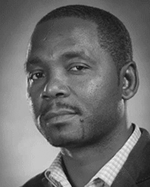
Roland T. Okwen, PhD
University of Illinois,
Urbana-Champaign
Dr. Roland T. Okwen is a reservoir engineer at the Illinois State Geological Survey (ISGS), University of Illinois at Urbana-Champaign. As a member of the ISGS, he has contributed to the Midwest Geological Sequestration Consortium’s Phase II pilot studies in the Illinois Basin and continues to assist in the development of performance curves to act as screening tools for carbon dioxide (CO2) enhanced oil recovery floods. He was the principal investigator (PI) of a project that quantified the CO2 storage efficiency of different depositional environments. Currently, he is the PI of a project titled “Brine Extraction and Treatment Strategies to Enhance Pressure Management and Control of CO2 Plumes in Deep Geologic Formations.” Before joining the ISGS, Dr. Okwen was a Postdoctoral Research Associate at the Schlumberger Cambridge Research Center in the United Kingdom. He earned his PhD in civil engineering from the University of South Florida (2009), MS in petroleum engineering from the Technical University of Denmark (2005), and BS in chemistry from the University of Buea (1997). His research interests are in geological sequestration of CO2, enhanced oil recovery, reservoir geomechanics, and unconventional resources.
|
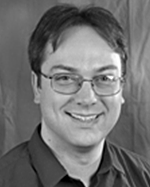
Pierre-Yves Le Bas, PhD
Los Alamos National Laboratory
Dr. Pierre-Yves Le Bas obtained his MS in electronics and applied physics and doctorate in acoustics from the University of Le Havre, France. His work includes material characterization and nondestructive testing using nonlinear acoustics and time reversal as well as developing instrumentation for experiments in multiple domains, including acoustics and detonation science. He is involved in multiple collaborations with the oil and gas industry for rock formation characterization.
|
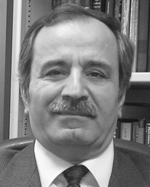
Muhammad Sahimi, PhD
University of Southern California
Muhammad Sahimi is Professor of Chemical Engineering and Materials Science and the NIOC Chair in Petroleum Engineering at the University of Southern California in Los Angeles. He received his B.S. degree from the University of Tehran, Iran in 1977, and his Ph.D. from the University of Minnesota in Minneapolis in 1984, both in chemical engineering. He has been involved with research on porous media and materials for 35 years. He has received several awards for his work, the latest of which the Honorary Membership Prize of the International Society for Porous Media (InterPore) in 2015, the highest award of the society.
|
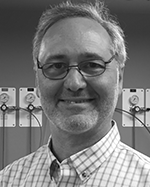
Paul Sylvester, PhD
Texas Tech University
Paul Sylvester is the Endowed Pevehouse Chair Professor of Geosciences at Texas Tech University. He has held research and teaching positions at NASA Johnson Space Center, The University of Chicago, Australian National University, and Memorial University of Newfoundland. His research interests are focused on mineral geochemistry and geochronology using microbeam instruments, particularly LA-ICP-MS. He holds a BSc degree from Purdue University and a PhD degree from Washington University in St. Louis. He is a Fellow of the Geological Society of America and Mineralogical Society of America; Editor-in-Chief of Minerals; and Joint-Editor-in Chief of Geostandards and Geoanalytical Research.
|
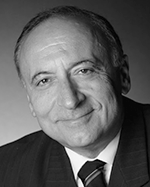
Theodore Tsotsis, PhD
University of Southern California
Professor Tsotsis received his Ph.D. in Chemical Engineering from the University of Illinois at Urbana-Champaign in 1978. He then joined the University of Southern California (USC), where he currently holds the title of the Robert E. Vivian Professor in Energy Resources in the Mork Family Department of Chemical Engineering and Materials Science. He also served as the Department’s inaugural Chair in 2005. Professor Tsotsis’ research interests are in the areas of transport, adsorption and reaction in complex porous media, reaction engineering, reactor design, and membrane separations. He is the author of over 230 technical papers, several book chapters, six U. S. and one European patent, and one book. He has also edited two Technical Meeting Proceedings volumes. He has worked on a broad array of problems, ranging from the abstract and theoretical (symmetry breaking instabilities, reaction rate oscillations) to the practical and applied (petroleum upgrading, and membrane reactors and bioreactors). Professor Tsotsis was the co-founder and a member of the executive board of USC's NSF/IGERT Center in Environmental Engineering. He is a Fellow of the AIChE.
|
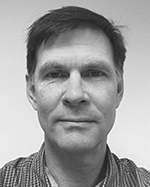
Steve Whittaker, PhD
University of Illinois, Urbana-Champaign
Dr. Steve Whittaker is the Director of Energy Research & Development at the Illinois State Geological Survey, which is a part of the Prairie Research Institute at the University of Illinois. He leads a team with wide-ranging research interests in efficiencies around subsurface resources, including carbon capture and storage. He was previously based in Perth, Australia, where he was Research Group Leader for Reservoir Dynamics with the Commonwealth Scientific and Industrial Research Organisation (CSIRO), working on deploying carbon storage technology at the industrial scale in Australia and globally. Steve also serves as Chair of the TC265 committee developing ISO 27914, an international standard for geological storage of CO2. Previously, he was Principal Manager for Geologic Storage of CO2 at the Global CCS Institute in Canberra, Australia, and Chief Technology Manager at the Petroleum Technology Research Centre in Canada. In the latter position, he managed a program studying storage and monitoring of CO2 injected into a depleting oil field for enhanced oil recovery at Weyburn, Saskatchewan, which is among the world’s largest monitored CO2 injection sites. Steve is a geologist with a PhD from the University of Saskatchewan, Canada, and has worked in petroleum and carbon storage related fields for more than 20 years.
|
|
















